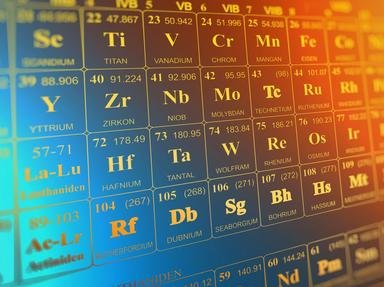
The Elements Trivia Quiz
No - not Euclid's "Elements", Dmitri Mendeleev's! In 1869 he proposed a way of organizing the pure substances that are found on earth. The periodic table was born!
by ponycargirl.
Estimated time: 3 mins.
- Home
- »
- Quizzes
- »
- Science Trivia
- »
- Chemistry
- »
- Periodic Table